The term “hidden gem” gets bandied around a lot in relation to all sorts of places in London – bars and restaurants, museums, galleries and historic buildings. It’s a bit of an overworn phrase, but the subject of today’s post definitely fits the criteria for a hidden gem: small and off the beaten track, pretty and perfectly formed.
Through a little gateway on Fleet Street lies the Temple, the inner sanctum of Britain’s legal profession. It’s a curious name – one that always intrigued me when I was younger, going through Temple Station whilst on the District Line and wondering if there actually was a temple there. There is no temple, but amid the chambers of barristers is a little old church that has a history going all the way back to the Knights Templar.

I visited Temple Church one gloomy winter lunchtime, heading down through the familiar bustle of Fleet Street and then venturing for the first time into the Temple area. As soon as I stepped off Fleet Street, the noise and the crowds disappeared. Not many people pass through this place unless they work here or have business with one of the many legal professionals based in the buildings huddled around the little courtyards. Some parts of the Inner Temple are even off limits to the public. Temple Church, however, is open to all and hosts lectures and organ recitals as well as regular services. I handed over the £5 entry fee and began to explore this extraordinary building.
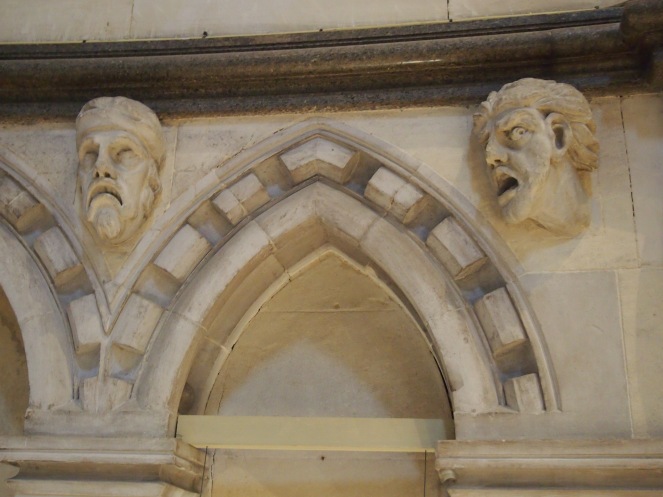
In many ways the story of Temple Church begins with Jerusalem, and with the Knights Templar. The Knights Templar, or – to give them their full name – the Poor Fellow-Soldiers of Christ and of the Temple of Solomon, were a military order whose first headquarters was based in Jerusalem on the Temple Mount. This site was the inspiration for the order’s name, as it is alleged to be the location of the Temple of Solomon. After Jerusalem had been captured in 1099 during the First Crusade, the Knights Templar were founded to protect Christian pilgrims visiting the city.

Mention the Knights Templar and all sorts of images are conjured up: their Crusades, their distinctive white tunics emblazoned with a red cross, their wealth, and their sudden downfall and persecution after 1307. The story of the Templars and their dramatic fall from grace has also become enmeshed with various conspiracy theories, many of them relating to groups such as the freemasons, or links them with legendary artefacts such as the Holy Grail.
Little reminders of Temple Church’s founders can be spotted all over the church.
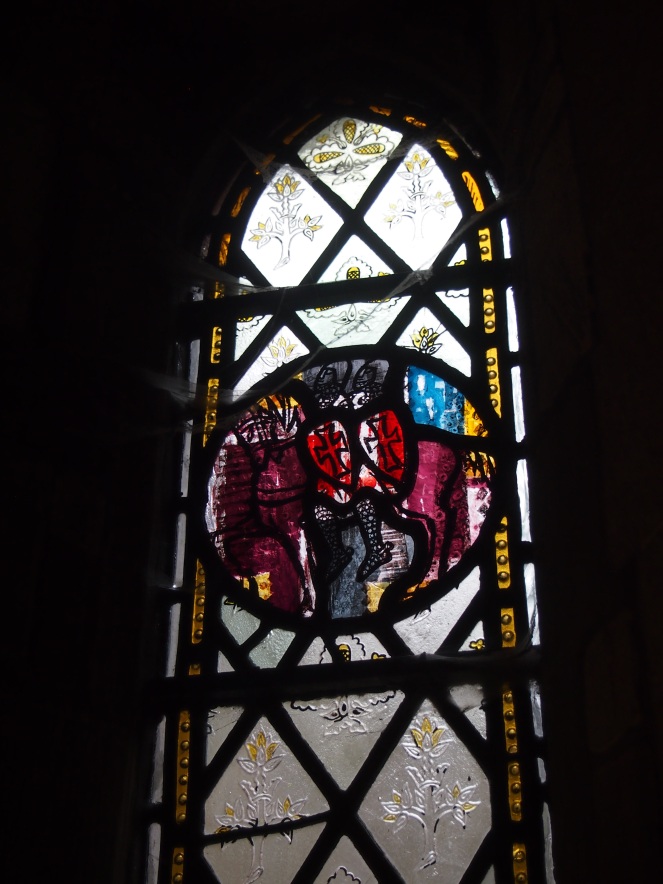
The church is an unusual structure, dominated by the round nave that was is inspired by the architecture of one of the holiest sites in Christianity, Jerusalem’s Church of the Holy Sepulchre. Members of the Knights Templar who had visited the order’s headquarters in Jerusalem would certainly have visited this venerated place.
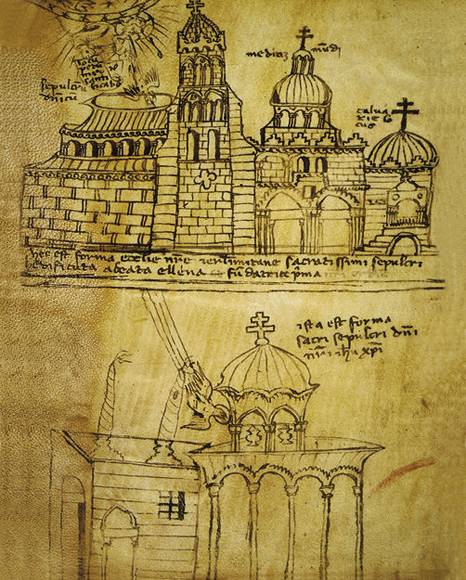
Work on the London headquarters of the Knights Templar began in the 1160s, after their previous accomodation in Holborn became too small. In 1185, the newly-built church was consecrated by Heraclius, Patriarch of Jerusalem, during a lavish ceremony that is thought to have been attended by King Henry II.

By the late 12th Century, the solid round arches that were characteristic of earlier Norman architecture were falling out of fashion, with the graceful pointed arches seen all over Temple Church becoming more popular. This was the first step in the evolution from Romanesque to Gothic architecture. The round nave is supported by black columns made out of Purbeck marble – at the time, they were the first free-standing columns to be constructed out of Purbeck marble, a material which is found in many churches and cathedrals in England.
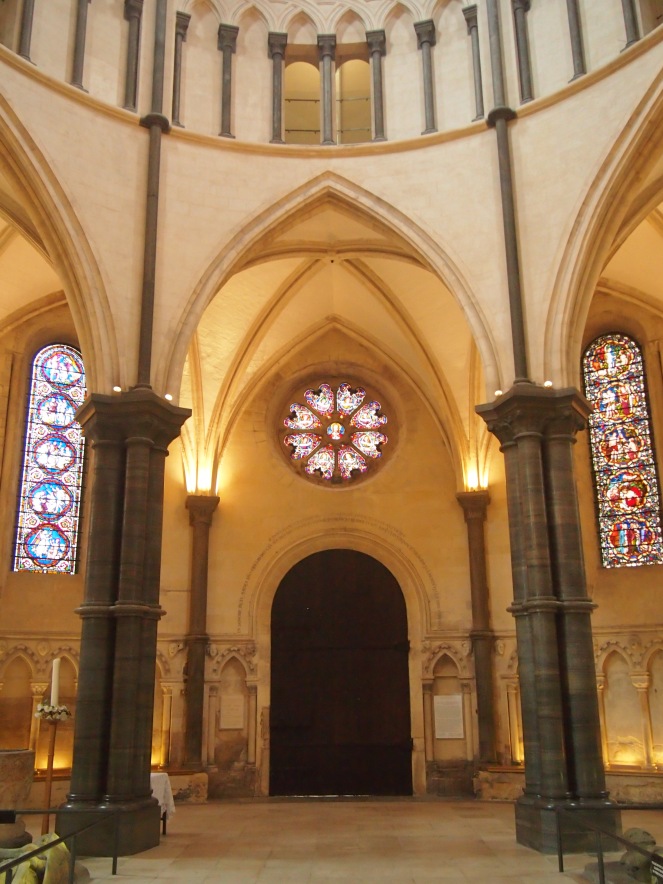
The nave is watched over by a succession of grotesque faces, carved in stone and probably originally brightly coloured. These often amusing faces are a well-known and well-loved feature of the church – each one is different, and plenty of visitors (myself included) took the time to go around the nave looking at each one.
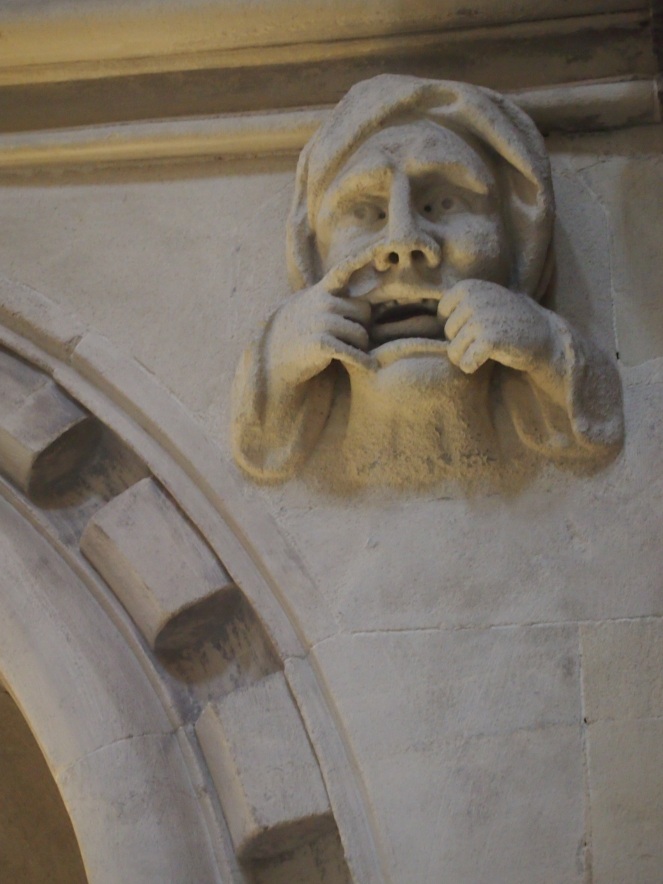
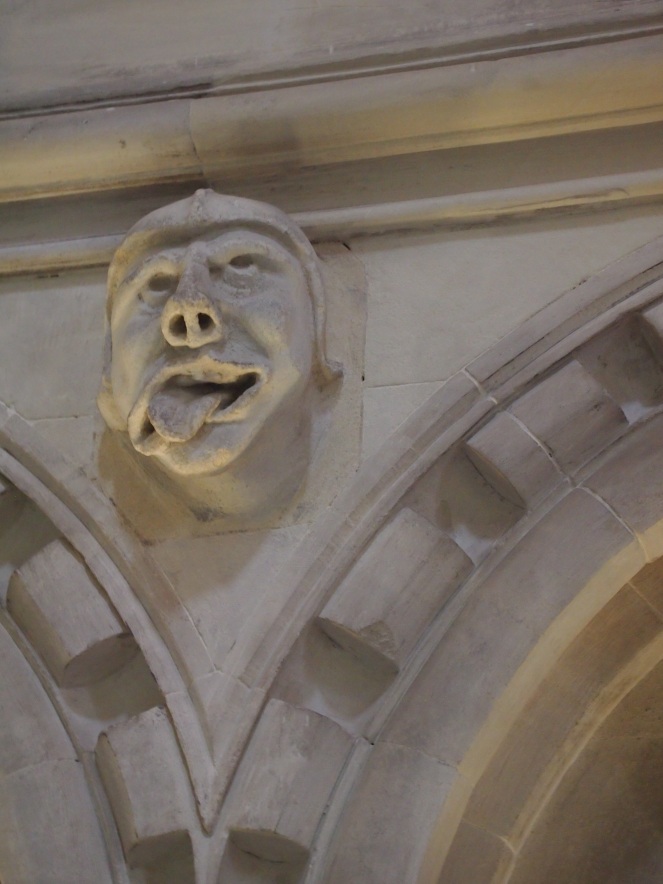


The grotesques are not the only stone faces to be found in the nave – a number of stone effigies of knights also reside there. Probably the most famous figure depicted is that of William Marshal, who was described as the “best knight that ever lived.” Marshal rose from humble beginnings to being one of the most powerful men in the country, acting as regent when Richard I was abroad on crusade and for Henry III when the king was still a minor. He was also involved in the strife between King John and the barons that resulted in the king signing the Magna Carta. Noted for his loyalty to the kings he served, Marshal ended his long life as the Earl of Pembroke and was buried at Temple Church. Two of his sons, and their corresponding effigies, rest alongside him.
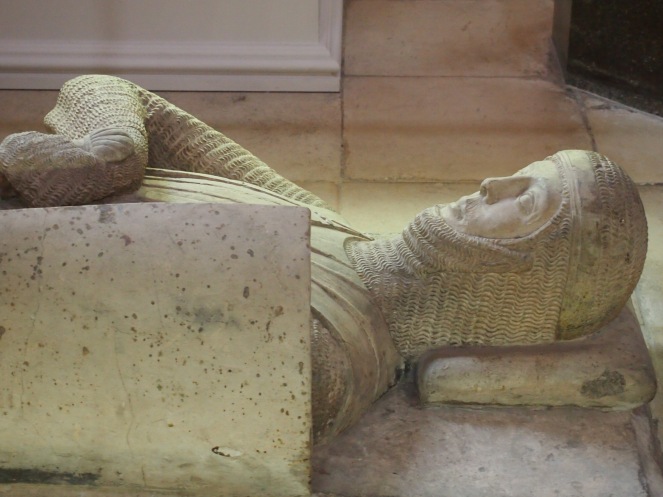

The effigy in the glass case pictured to the left of William Marshal in the photograph above is a 19th Century replica of one of the original medieval effigies in the church. Four of these replicas, on loan from the Victoria and Albert museum, were on display when I visited. The creation of these replicas later proved to be invaluable, as the stone effigies were damaged during the Second World War. The replicas acted as guides to ensure that the effigies were restored to their previous appearance.
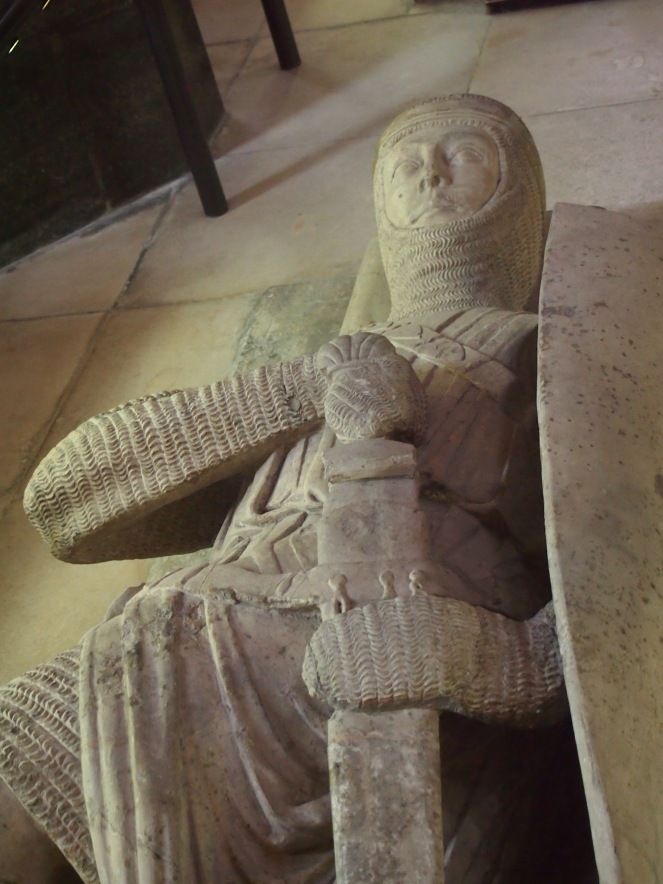

In the mid-13th Century the chancel of the church was rebuilt – Henry III himself planned to be buried in this newer part of the church, which was consecrated in 1240. However, in the end Henry was laid to rest at Westminster Abbey, although one of his infant sons was buried at Temple Church.
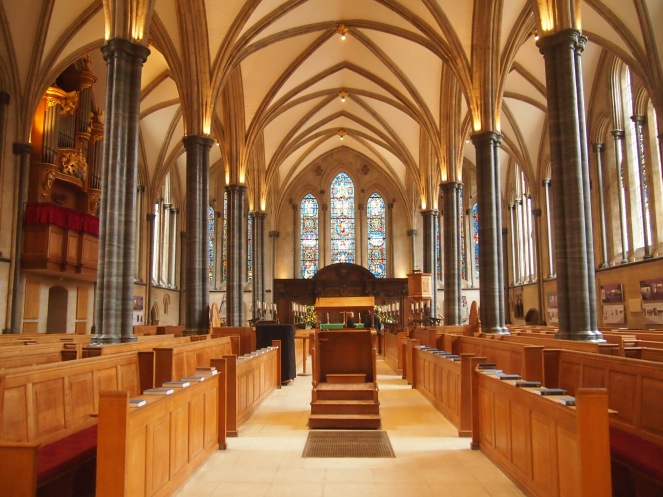
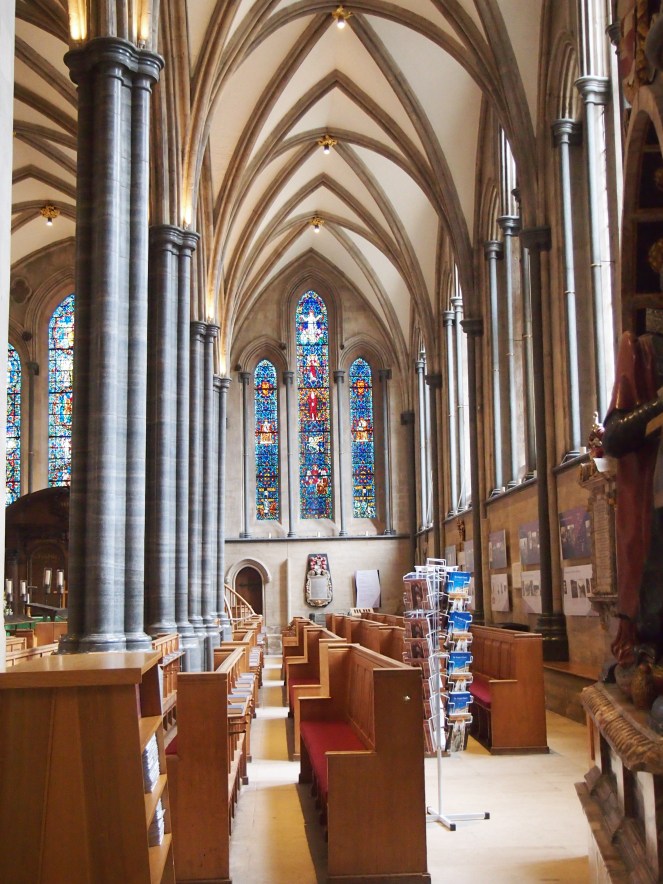
After the demise of the Knights Templar in the early 14th Century, Temple Church became a Crown possession. After that, it was used by the Knights Hospitaller, who rented the church to two colleges of lawyers, the forerunners to the Inns of Court that became the Inner Temple and Middle Temple. After the Reformation, the church continued to be used by members of the legal profession but the Knights Hospitaller were dissolved and their assets, including Temple Church, returned to the Crown. It wasn’t until 1608 that the church was granted to the Inner Temple and Middle Temple in perpetuity. The church escaped the flames of the Great Fire of London in 1666.
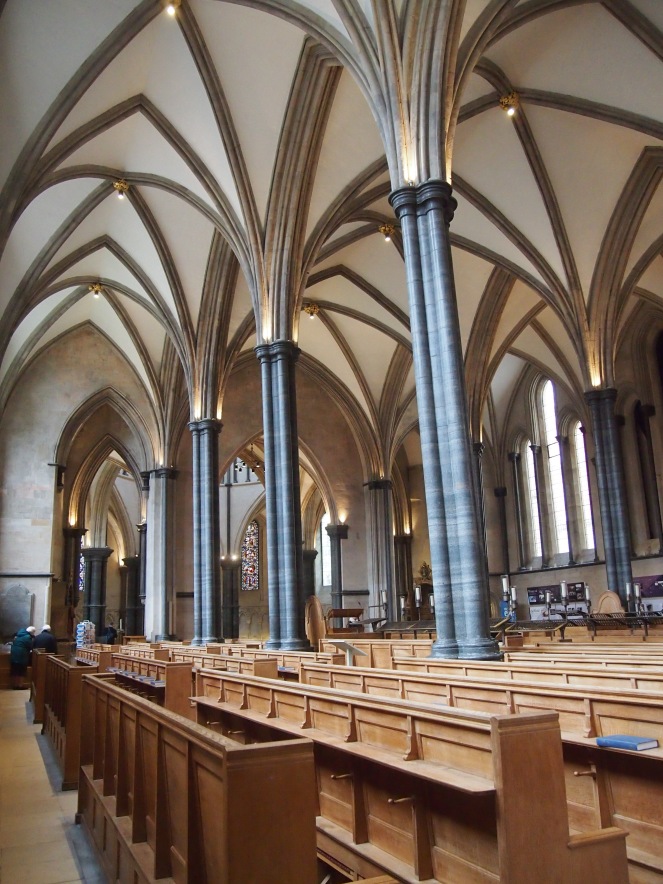
An 1878 account of Temple Church and its history describes how, in the late 17th Century, various additions were made to the interior of the building. These additions included wooden panelling on the walls, new wooden pews, screens which divided up the space in the church and a new altar piece, all in a Classical style that didn’t really fit in with the graceful Gothic arches. These changes were, by the 19th Century, looked upon rather scathingly and the 1878 entry on Temple Church in Old and New London describes how they were removed in an attempt to restore the church to its medieval appearance.
Old and New London states that “the restoration of this beautiful relic was one of the first symptoms of the modern Gothic revival.” Some restoration had been carried out in the 1820s, but the work really began about twenty years later. Two architects, Sydney Smirke and Decimus Burton, were in charge of the project and removed the unsympathetic 17th Century additions, as well as restoring the building’s structure and adding brightly painted wall murals inspired by pre-Reformation church paintings. Many old coffins were found in the round nave during the restoration – they were reinterred in the centre of the church.
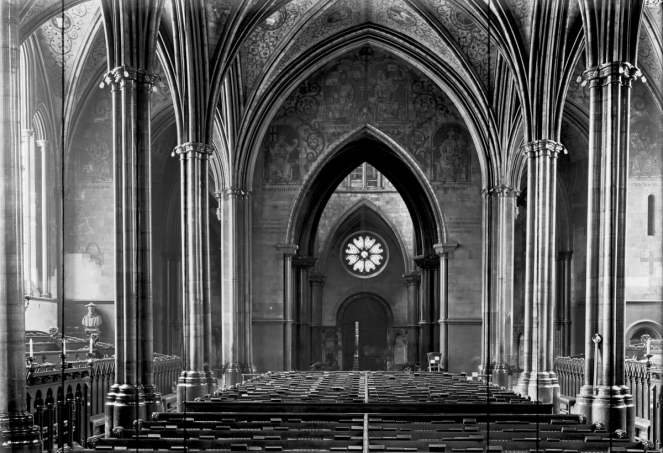
The Second World War brought damage and destruction to Temple Church. Air raid damage in 1941 destroyed much of the restoration work that had been done exactly a century earlier, including the many colourful wall paintings. Incendiary bombs destroyed the roof of the round nave and the heat of the blaze cracked the black Purbeck marble columns.
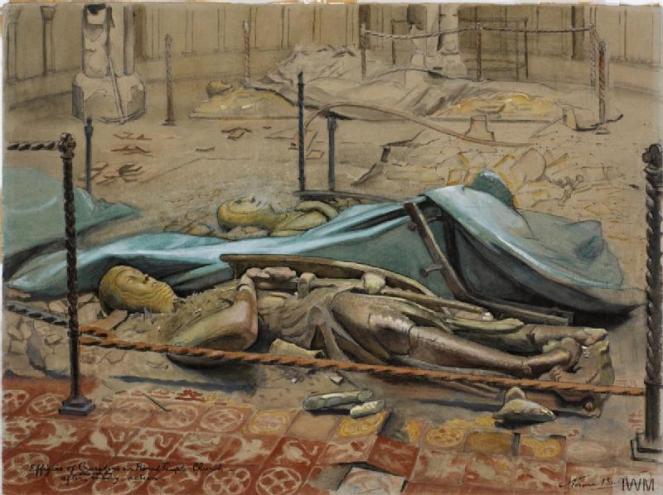
The picture above, by war artist Norma Bull, shows some of the church’s effigies in the aftermath of a damaging air raid. After the war was over, a comprehensive scheme to repair and restore the church began. This restoration took ten years to complete, and the church was rededicated in 1958. In keeping with the tastes of the period, the lost Victorian wall paintings were not reinstated. A number of fittings designed by Sir Christopher Wren, which had been removed during the 1841 restoration, were returned to the church.
Today, the restored Temple Church almost feels modern, despite the 12th and 13th Century stonework. The walls are clean and unadorned, allowing the graceful arches to take precedence.

The upstairs space of the nave, accessed by a spiral staircase, is now used as an exhibition space.
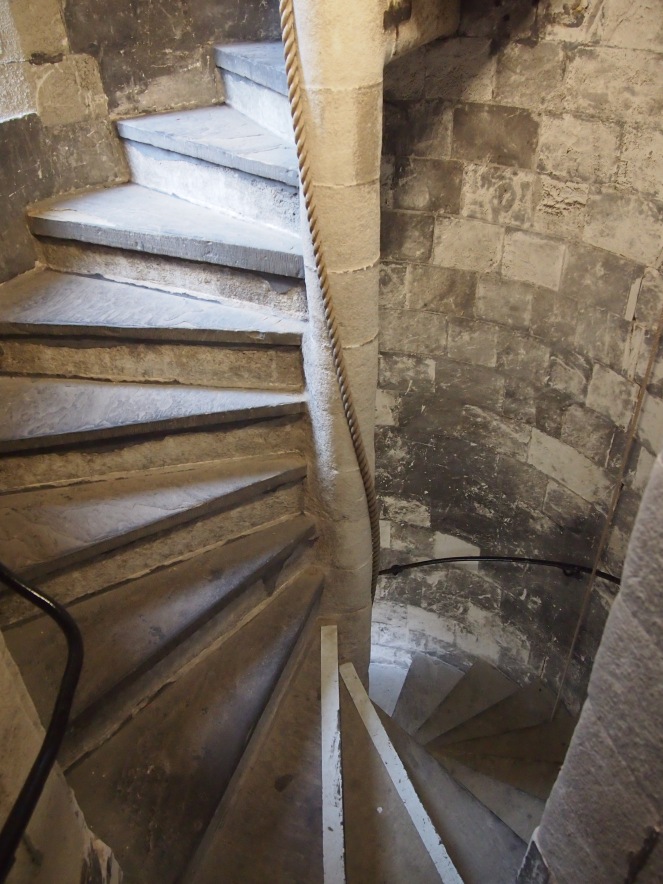

Temple Church, hidden away in the Temple district, often gets overlooked, despite its proximity to the more famous churches of St Paul’s Cathedral and St Bride’s. It’s a true gem of a church, pretty and welcoming, with a fascinating history. I was particularly fond of the carved grotesque faces, which had a sense of fun often missing in churches. The wonderful effigy graves were also a real treat – rare medieval survivors in a part of London that was mostly consumed by the Great Fire of 1666.
If there are any drawbacks at all, it is that Temple Church is generally not open to the public at the weekends, or during the summer months. It’s definitely worth checking their website in advance if you’re thinking of visiting. As well as the general opening times and regular services, many organ and choral recitals are held at Temple Church, as well as lectures and other special events. It’s a wonderful building, a peaceful haven in the bustle of central London, and it’s well worth a visit.
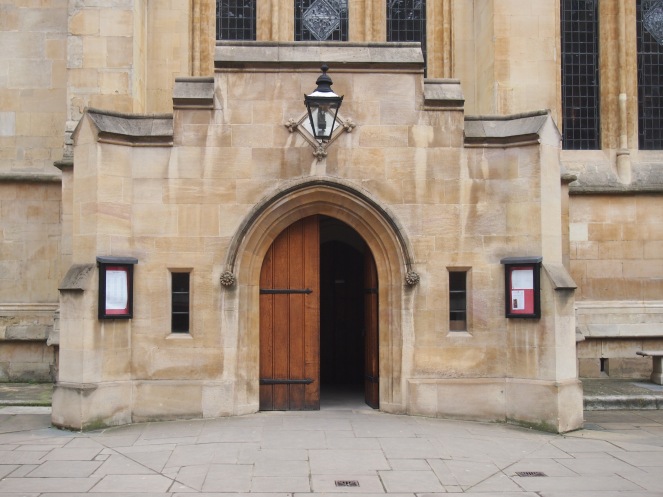
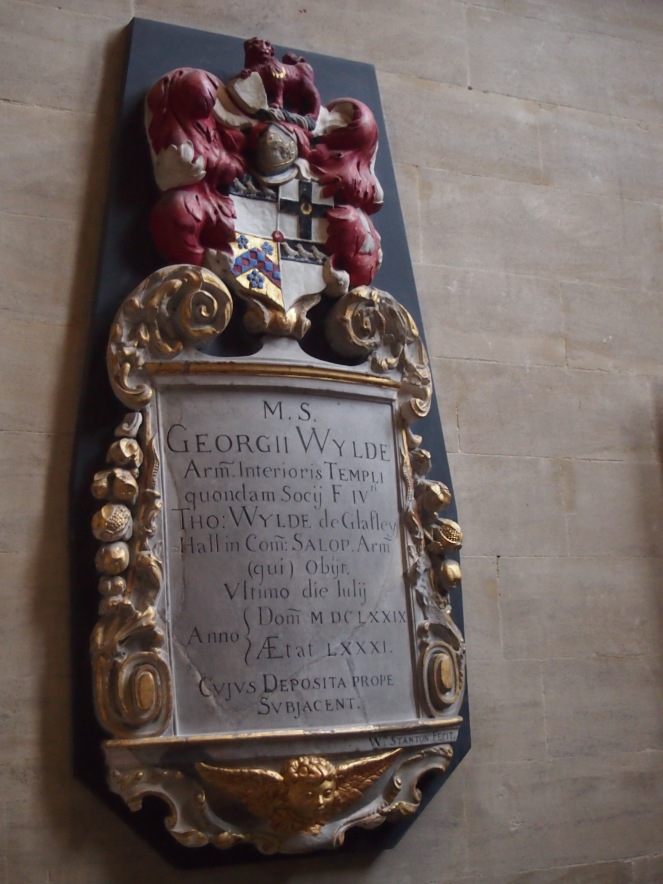
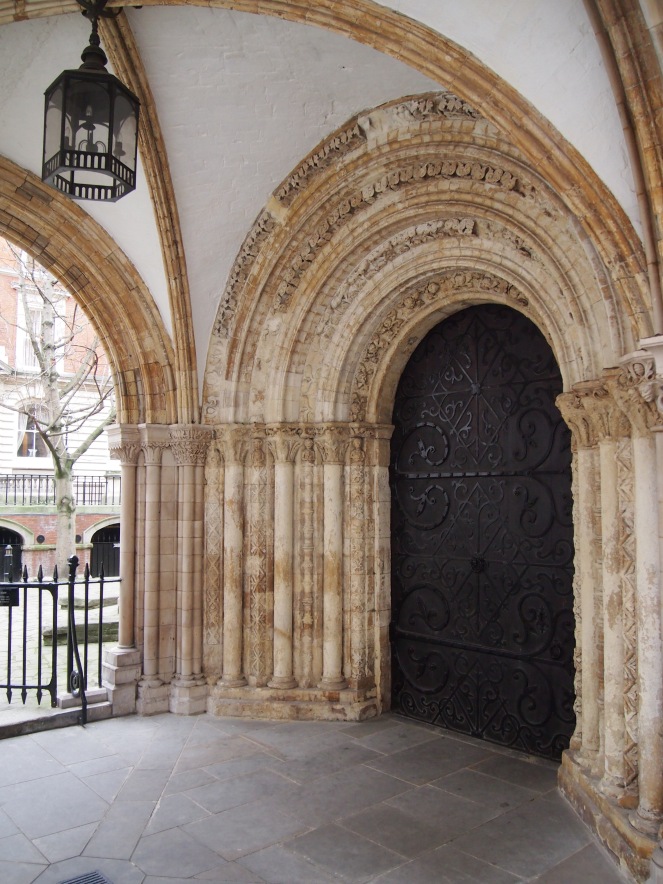
References and further reading
Temple Church History http://www.templechurch.com/history-2/
Old and New London: Volume 1, 1878 http://www.british-history.ac.uk/old-new-london/vol1/pp149-158
The Textile Blog – The Medieval Restoration Work of Sydney Smirke and Decimus Burton, 7th November 2013 http://thetextileblog.blogspot.co.uk/2013/11/the-medieval-restoration-work-of-sydney.html
The Victorian Web – The Temple Church, Temple, London: An Early Victorian Restoration http://www.victorianweb.org/art/architecture/churches/65.html
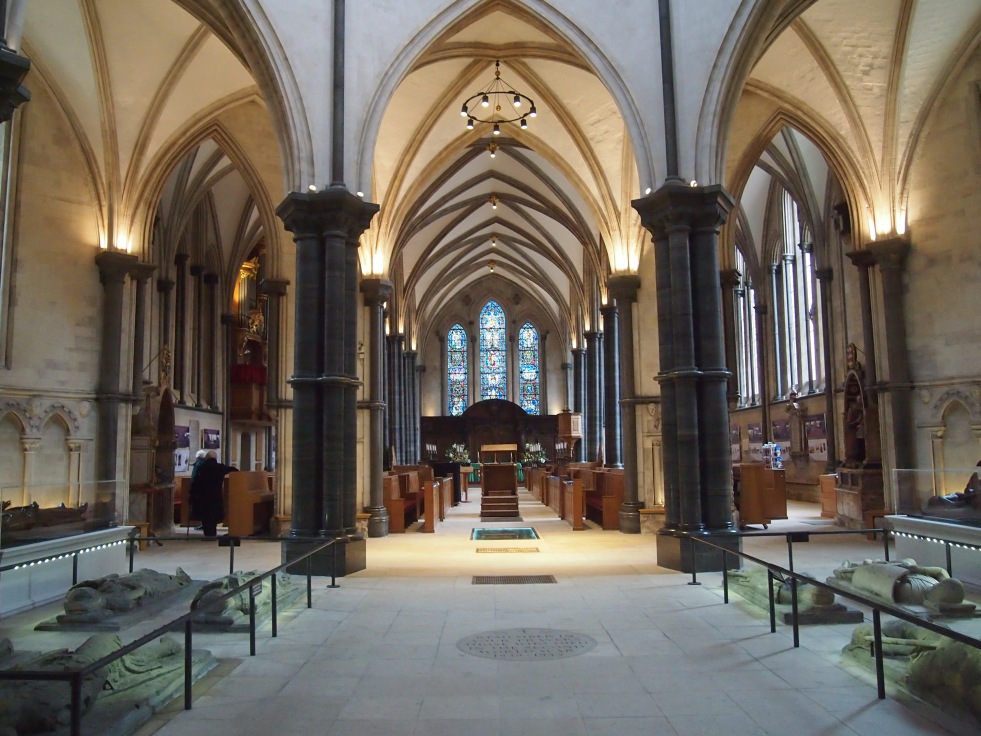

Fabulous post today. Thanks as always. Do you realize how much airfare you are saving me. Or perhaps just making me want to visit England again more deeply. Beautiful job on this.
LikeLike
Thank you so much!
LikeLike
I just finished reading H.V. Morton’s “A Traveller in London,” which in part described the painful damage inflicted on the Temple church during the war. It was good to see photos of it today. Thanks for the informative blog.
LikeLike
My post was well-timed, then! It’s great to see the church looking so beautiful today after the terrible damage it sustained in the war.
LikeLike
Amazing place, lovely photos, there is is just not enough time to visit everything, so glad you can do the London churches for us 🙂
LikeLike
There are so many wonderful churches hidden away in London – despite having worked in the City for a few years there are so many fascinating churches within walking distance of my office that I haven’t yet explored!
LikeLiked by 1 person
I swear that spiral staircase is absolutely identical to one we went up at Castle Rushen (IOM) long ago! Also, do you know the provenance of the grotesque faces? Fascinating, they are! Especially the Miley Cyrus impersonator and the chap about to pick his nose 😉
LikeLike
I absolutely love the grotesque faces. I bet they looked even better when they were painted in bright colours. I know that grotesques were quite widespread during the Norman period and later, but I’m not entirely sure of their purpose. Some reports say that they were meant to frighten people, others that they were meant to amuse. And of course some of them, like the Sheela-na-gig, are rather rude! They are very odd!
LikeLike
Reblogged this on The Linden Chronicles: The Wolf's Moon by Patrick Jones and commented:
A most interesting history and picture documentation of Temple Church: The Hidden Church Founded by the Knights Templar
LikeLike
Reblogged this on Progressive Rubber Boots.
LikeLike
Fascinating. I have been meaning to visit for years, your interesting post may be the nudge that I need to finally get there!
LikeLike
Yes, do go and visit! It’s a fantastic place.
LikeLike
Absolutely delighted to read this and see all the photos. Last year, my eldest daughter and I tried to visit, but we were rather late in the day and it was closed, so we only saw it from the outside – now we know what the inside looked like! – thank you. I downloaded a book about William Marshal a couple of months ago, but I still haven’t started it – although I know Pembroke Castle and Chepstow Castle well enough, it’s lovely – for me at any rate – to link places with real people, and this is another link in the Marshal chain.
LikeLike
I love being able to link places to individual people – William Marshal had such a fascinating life and it was great to see his effigy, and those of his sons, in Temple Church.
LikeLike
Beautiful photography Thank you for this tour of a place many of us won’t have a chance to visit. The clues left behind are always fascinating, aren’t they? Best wishes, WG
LikeLike
Thank you!
LikeLiked by 1 person
This is the first time I’ve looked at one of your blogs. What a find! It’s a cracking creation, well and painstakingly written, with some beautiful pics as well. I’ll be reading more.
LikeLike
Thank you very much! I’m glad you enjoyed this post and hope you’ll enjoy more in the future!
LikeLiked by 1 person
What a beautiful blog you have. I can’t begin to tell you how much I’ve been enjoying it. Your photography is amazing! Thank you for giving me my little vacations during mundane work days!
LikeLiked by 1 person
Thank you so much, Edie! I really enjoy photographing & researching the places I write about, so it’s always lovely to hear that people enjoy reading about them!
LikeLiked by 1 person
Beautiful phtography 🙂
http://www.textilewithme.blogspot.com
LikeLike
Thank you!
LikeLike
Loved your post… It is amazing what gems are hidden away in our streets…
LikeLike
Thank you!
LikeLike
Wonderful Article. Thank You.
I will be re-blogging this Article on ZEPHYRINUS
http://zephyrinus-zephyrinus.blogspot.co.uk/
LikeLike
Thank you!
LikeLike
Really enjoyed reading this Caroline, you brought the church alive with your description and lovely photographs
LikeLike
The stone font which appears in the background of one of your photographs has deceived many people into thinking it is 12th century work. In fact it is a fake, produced in or around 1841 as part of the Victorian “refurbishment” aimed at giving the church a more medieval appearance than it had after hundreds of years of alterations. The font was modelled on a genuine 12th century example at Alphington Church in Devon, but with many changes in detail and much crisper carving than would be found on a font of that age. Much of the present appearance of the Temple Church is false and the product of designers’ imaginations over the years – a real Templar knight of 1185 would hardly recognise the place.
LikeLike
Yes, today’s Temple Church would be completely unrecognisable to the people who worshipped in the church at the time of the Knights Templar. One of the reasons I love old churches so much is that their appearance has evolved and changed so much over their ‘lifetimes’ – each change reflects different fashions, politics, religious ideas and artistic traditions.
Victorian ‘refurbishments’ can be pretty hit and miss – at least with the font at Temple they modelled it on a genuine 12th century example. I find it fascinating that so many Victorian churches were altered to try and recreate a ‘medieval’ appearance, but instead ended up looking completely different once again!
LikeLike
Thank you so much! Blessings
LikeLike
Enjoyed this work very much and as a modern member of the KT’s will enquire next I am down in London to see if I can visit
LikeLike
William Marshall is my 27th great grandfather.
LikeLike
Wonderful blog, the write up and photographs. Have visited the Temple couple of times when I lived and worked in London. It was refreshing each time. Thank you for the post.
LikeLike
Thank you!
LikeLike
How many grotesques faces are in the round?
LikeLike